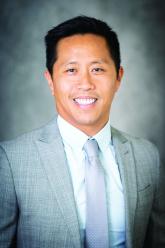News

The Effects of Immigration on the Parent-Child Relationship
- Author:
- Duy Nguyen, MD
- Andrew Contreras
Publish date: June 13, 2024
Immigrant parents can become dependent on their children to negotiate social structures instead of vice versa,...
News

Mental Health Interventions for Refugee Children
- Author:
- Duy Nguyen, MD
Publish date: February 21, 2024
The plight of refugee children can be improved by varying levels of intervention — individual, group, family,...
News

Mental health characteristics of refugee children
- Author:
- Duy Nguyen, MD
Publish date: November 14, 2023
Refugees are at greater risks for PTSD and affective and psychotic disorders, presumably due to increased traumatic life events before, during,...
Opinion

LGBTQ+ teens in homophobic high schools
- Author:
- Duy Nguyen, MD
Publish date: March 15, 2023
Comparing these two local high schools reinforced to me how visibility really matters in creating a childhood experience that is nurturing versus...
Opinion

Talking to teens
- Author:
- Duy Nguyen, MD
Publish date: September 15, 2022
The first step toward treating someone authentically as an equal when in a position of authority is to understand the unique stressors of their...
